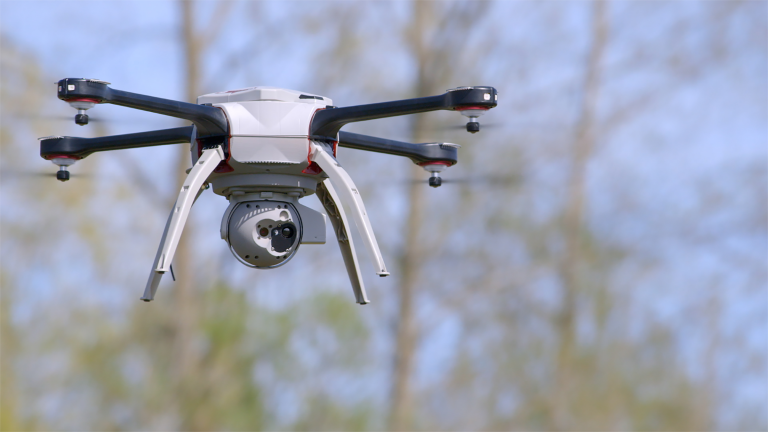It seemed destined to happen, their top executives say.
Two companies, both based in Waterloo, both evolving along remarkably similar timelines, would eventually find something they could work on together.
This week, Aeryon Labs Inc. and Dejero Labs Inc. found themselves at a trade show in Atlanta, demonstrating a fresh partnership: unmanned Aeryon drones feeding video that Dejero’s technology pumps out to the wider world.
Television companies dispatching crews for remote broadcasts rank among Dejero’s top customers. Emergency-response agencies and military departments are on Aeryon’s client list.
“This allows us to provide our video platform to people who never thought what we’re doing is possible,” Bogdan Frusina, Dejero’s founder and Chief Technology Officer, told Communitech News. “And it brings technology that Aeryon has to the broadcast market that broadcasters never thought was possible. It’s a plus-plus for everyone.”
Frusina and Aeryon President and CEO Dave Kroetsch know each other. They go to the same tech events.
“Probably since we established companies, Bogdan and I have been in touch, and we have been seeking opportunities to work together,” Kroetsch said.

Drones from Aeryon Labs are a natural vehicle for Dejero Labs’
remote-broadcast technology. (Photo courtesy of Aeryon Labs)
But both executives say credit for the partnership that now connects Aeryon drones to Dejero’s means of capturing, managing and distributing video goes to their sales and marketing teams.
More importantly, to the staff tuning into a customer need.
Founded in 2007, Aeryon builds small unmanned aerial vehicles (sUAVs) that carry a camera and collapse for transport into something the size of a suitcase.
That portability has quickly made the drones a valuable tool for military, emergency response and utility purposes when operators on the ground need a wide view from above.
Emergency crews in Nepal, which was devastated by an earthquake April 25, have been flying Aeryon’s SkyRanger drones.
Aeryon’s drone market is maturing and looking for enhancements, Kroestch said. What customers now want is a means of getting images not just to the operator on the ground, but also to the eyes of far-removed decision-makers.
With Dejero technology, the ground station becomes a relay point from which images shot by the drone can be moved in real time to people thousands of miles away.
“We could go and invent all that ourselves, but why, when there is already a Dejero platform that can do it?” Kroetsch said.
Frusina started Dejero in 2008. Today, the company is changing the mobile news industry by shrinking the technology required to get news video onto the screen.
Conventional remote newsgathering usually requires a truck with antennae and a microwave dish. Dejero has condensed the technology down to something the size of a hard-shell camera case. This spring, it went further, releasing a kit that clips onto the back of a video camera.
The system “bonds” wireless signals from cellular networks, wi-fi and satellites to stream high-quality video with minimal lag time. On the content-management end, Dejero technology handles feeds coming from multiple sources and distributes them.
Both Frusina and Kroetsch said the integration of Aeryon drone technology and the Dejero system came together with remarkably little fuss. Not quite as simple as plugging in an Ethernet cord, but close to it.
The same goes for the partnership that got it going in the first place. And for that, they say, the tech ecosystem in Waterloo Region can take credit.
“There’s a testament to the entrepreneurial spirit in the region in the ease with which we can both work together, both from a personality perspective and from a technology perspective,” Kroetsch said. "This has been a good example of that.”

